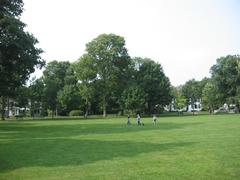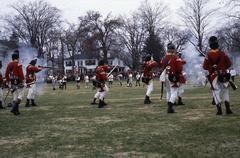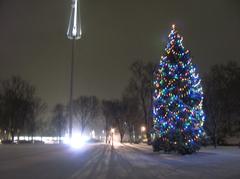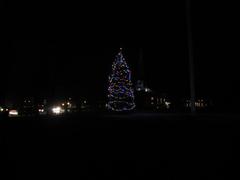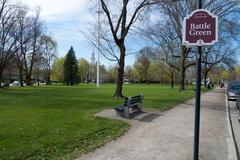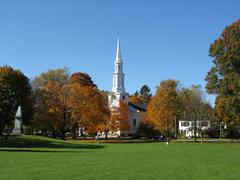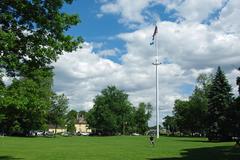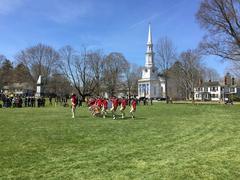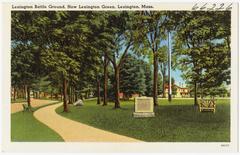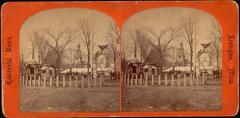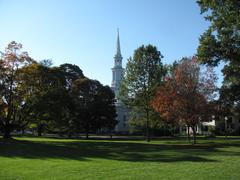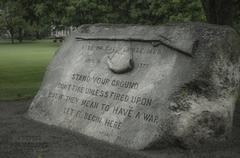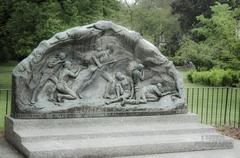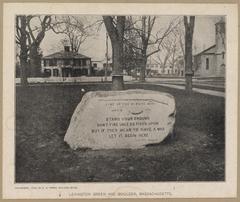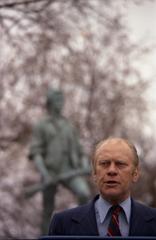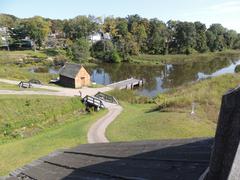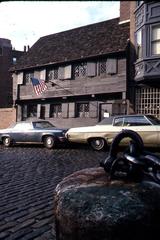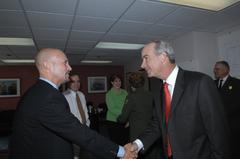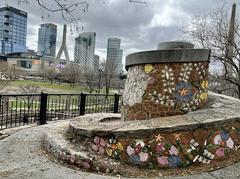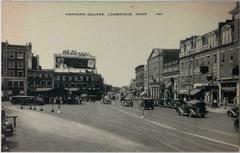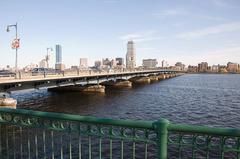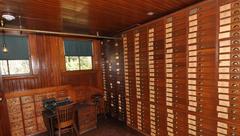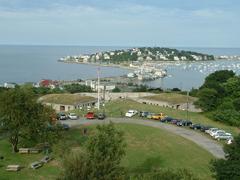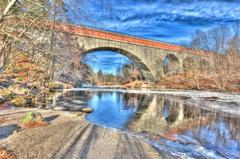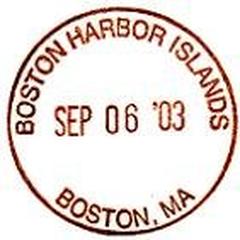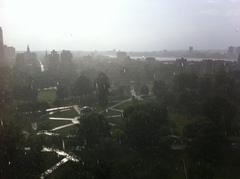
Comprehensive Guide to Visiting Lexington Battle Green, Boston, United States
Date: 19/07/2024
Introduction
Lexington Battle Green, also known as Lexington Common, holds a significant place in American history as the site where the first shots of the American Revolutionary War were fired on April 19, 1775. This historic location, situated in Lexington, Massachusetts, marks the beginning of the conflict between the American colonies and Great Britain, often referred to as “the shot heard ‘round the world,” a phrase coined by Ralph Waldo Emerson in his “Concord Hymn” (National Park Service). The events leading up to the battle were set in motion the night before when Paul Revere and William Dawes embarked on their famous midnight rides to warn the colonial militia of the approaching British forces (Paul Revere House). This guide aims to provide a comprehensive overview of visiting Lexington Battle Green, offering insights into its rich history, practical visiting information, and tips for an enriching experience. Whether you’re a history enthusiast or a casual visitor, Lexington Battle Green offers a unique opportunity to delve into the early moments of American independence.
Table of Contents
- Introduction
- History of Lexington Battle Green
- Visiting Information
- Visitor Tips
- Educational Resources
- FAQs
- Conclusion
History of Lexington Battle Green
The Prelude to the American Revolution
Lexington Battle Green is a historic site where the American Revolutionary War began. The Battle of Lexington and Concord is often referred to as “the shot heard ‘round the world,” a phrase coined by Ralph Waldo Emerson in his “Concord Hymn” (National Park Service).
The Midnight Ride
The events leading up to the battle began the night before, on April 18, 1775, when Paul Revere and William Dawes embarked on their famous midnight rides to warn the colonial militia of the approaching British forces. Revere and Dawes rode from Boston to Lexington, alerting the countryside that “the British are coming” (Paul Revere House).
The Battle on Lexington Green
In the early hours of April 19, 1775, approximately 700 British troops, under the command of Lieutenant Colonel Francis Smith, marched towards Concord to seize and destroy military supplies stored by the Massachusetts militia. As they reached Lexington, they encountered a small group of 77 colonial militiamen, known as Minutemen, led by Captain John Parker. The Minutemen had gathered on the Lexington Green, a triangular common area in the center of the town (Lexington Historical Society).
The confrontation was brief but significant. The British ordered the Minutemen to disperse, and in the ensuing confusion, a shot was fired—though it remains unclear which side fired first. This single shot triggered a volley of musket fire from both sides. The skirmish resulted in the deaths of eight Minutemen and injuries to several others. The British suffered only one wounded soldier before continuing their march to Concord (American Battlefield Trust).
The Aftermath and Significance
The Battle of Lexington was a pivotal moment in American history. It galvanized the colonial resistance and led to the mobilization of thousands of militia members from surrounding towns. The subsequent battles at Concord and the British retreat to Boston marked the beginning of the Revolutionary War. The events at Lexington Battle Green are commemorated annually on Patriots’ Day, a state holiday in Massachusetts and Maine, with reenactments and ceremonies (Massachusetts Office of Travel and Tourism).
Visiting Information
Hours and Tickets
- Visiting Hours: Lexington Battle Green is open to the public year-round from dawn to dusk.
- Tickets: Admission to the Battle Green is free. However, guided tours offered by the Lexington Historical Society may have fees. Check their website for the latest pricing (Lexington Historical Society Tours).
Special Events and Guided Tours
- Patriots’ Day Reenactments: If you visit during Patriots’ Day in April, you can witness reenactments of the Battle of Lexington. These events attract history enthusiasts and provide a vivid portrayal of the skirmish (Patriots’ Day Events).
- Guided Tours: Consider taking a guided tour to gain a deeper understanding of the historical significance of the site. The Lexington Historical Society offers tours led by knowledgeable guides who provide detailed accounts of the events that took place on the Green (Lexington Historical Society Tours).
Photographic Spots
- Minuteman Statue: Sculpted by Henry Hudson Kitson and dedicated in 1900, the statue depicts a colonial militiaman holding a musket, symbolizing the readiness of the Minutemen to defend their rights (Smithsonian Institution).
- Revolutionary War Monument: Erected in 1799, it marks the burial site of the eight Minutemen who died in the battle. An inscription on the monument reads, “Sacred to Liberty & the Rights of Mankind,” reflecting the ideals that fueled the American Revolution (Lexington Historical Society).
Visitor Tips
Visitor Center
Stop by the Lexington Visitors Center, located near the Battle Green, for maps, brochures, and additional information about the site and surrounding attractions (Lexington Visitors Center).
Parking and Accessibility
There is limited parking available near the Battle Green, so plan accordingly. The site is accessible to visitors with disabilities, with paved pathways and ramps.
Nearby Attractions
While in Lexington, consider visiting other historical sites such as the Hancock-Clarke House, where Paul Revere and William Dawes arrived to warn Samuel Adams and John Hancock of the British advance, and the Munroe Tavern, which served as a temporary field hospital for British troops (Lexington Historical Society).
Educational Resources
For those interested in learning more about the Battle of Lexington and its historical context, several resources are available:
- Books: “Paul Revere’s Ride” by David Hackett Fischer provides a comprehensive account of the events leading up to the battles of Lexington and Concord. Another recommended read is “April Morning” by Howard Fast, a historical novel that offers a fictionalized perspective of the battle.
- Documentaries: The PBS documentary “The American Revolution” includes detailed segments on the Battle of Lexington and Concord, featuring expert interviews and reenactments (PBS).
- Online Archives: The Massachusetts Historical Society and the American Antiquarian Society have extensive online archives with primary source documents, including letters, diaries, and official reports from the period (Massachusetts Historical Society, American Antiquarian Society).
FAQs
Q: What are the visiting hours for Lexington Battle Green?
A: Lexington Battle Green is open year-round from dawn to dusk.
Q: Is there an admission fee to visit Lexington Battle Green?
A: No, admission to the Battle Green is free. Guided tours may have fees.
Q: Are there any special events held at Lexington Battle Green?
A: Yes, during Patriots’ Day in April, reenactments of the Battle of Lexington are held, attracting many visitors.
Q: Is Lexington Battle Green accessible to visitors with disabilities?
A: Yes, the site is accessible with paved pathways and ramps.
Q: What other historical sites can I visit near Lexington Battle Green?
A: Other nearby historical sites include the Hancock-Clarke House and the Munroe Tavern.
Conclusion
Visiting Lexington Battle Green is not only a place of historical significance but also a location where visitors can immerse themselves in the rich history of the American Revolution. Whether you are a history buff or a casual visitor, the Battle Green offers a profound experience. Plan your visit, explore the site, and take part in the events to fully appreciate this pivotal moment in American history. For more information and updates, download our mobile app Audiala, check out other related posts, or follow us on social media.
References
- National Park Service. The Battle of Lexington. National Park Service
- Paul Revere House. The Ride. Paul Revere House
- Lexington Historical Society. Lexington Green. Lexington Historical Society
- American Battlefield Trust. Lexington and Concord. American Battlefield Trust
- Massachusetts Office of Travel and Tourism. Patriots’ Day. Massachusetts Office of Travel and Tourism
- Smithsonian Institution. Minuteman Statue. Smithsonian Institution
- Lexington Visitors Center. Lexington Visitors Center
- Town of Lexington. Town of Lexington
- History.com. Battles of Lexington and Concord. History.com
- Minute Man National Historical Park. Minute Man National Historical Park
- Lexington Police Department. Lexington Police Department
- Lexington Chamber of Commerce. Lexington Chamber of Commerce
- Buckman Tavern. Buckman Tavern
- Hancock-Clarke House. Hancock-Clarke House
- Munroe Tavern. Munroe Tavern
- PBS. The American Revolution. PBS
